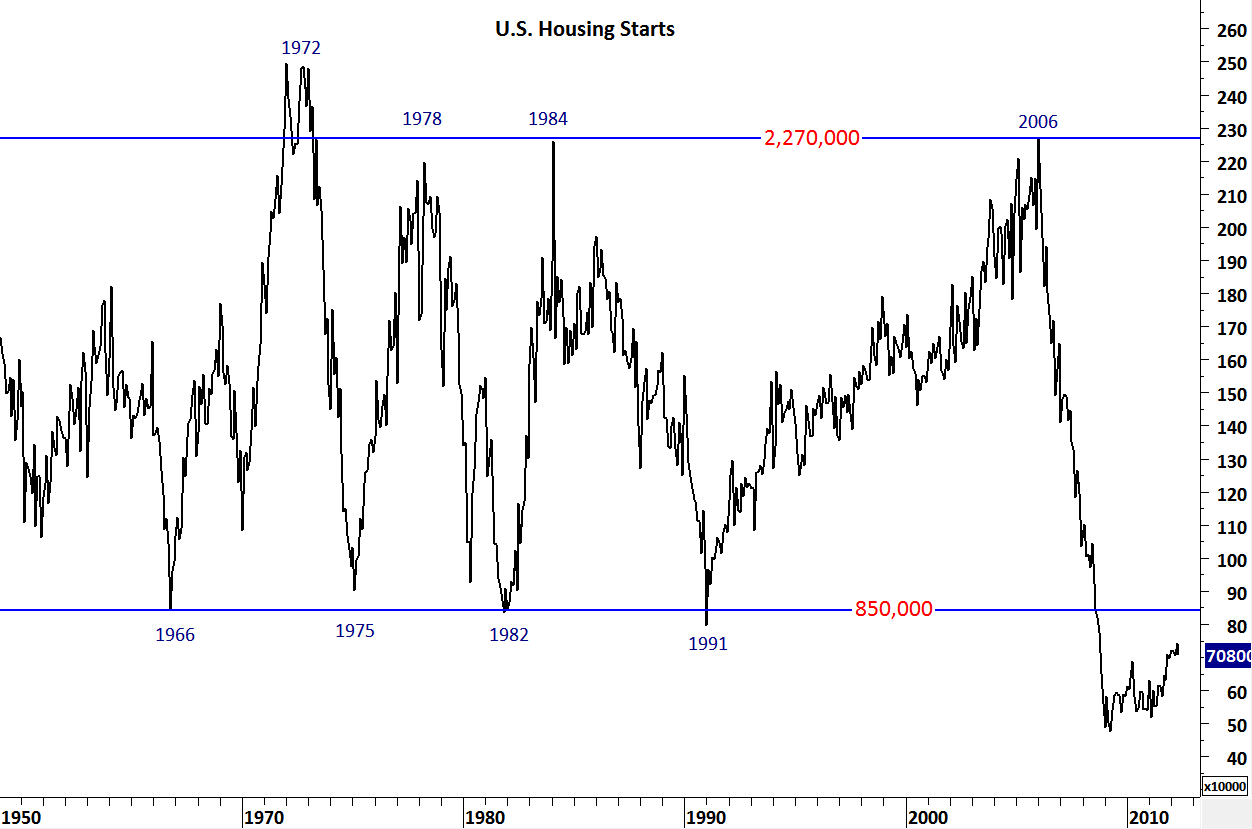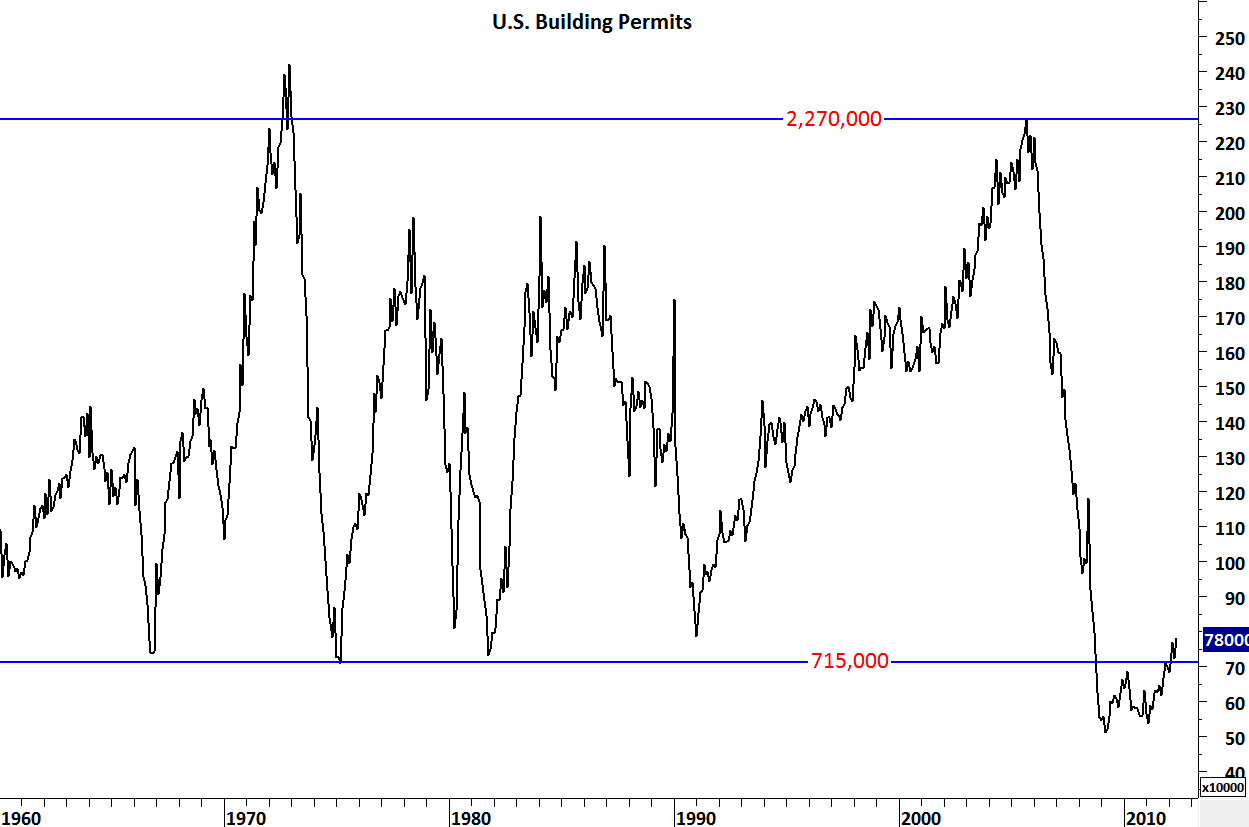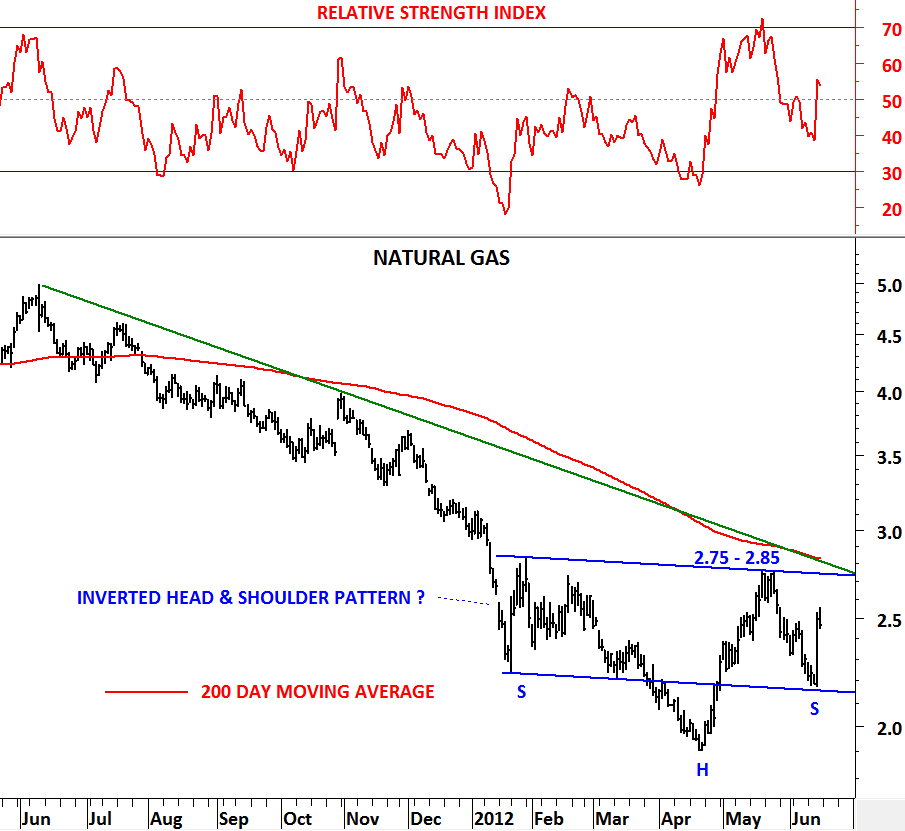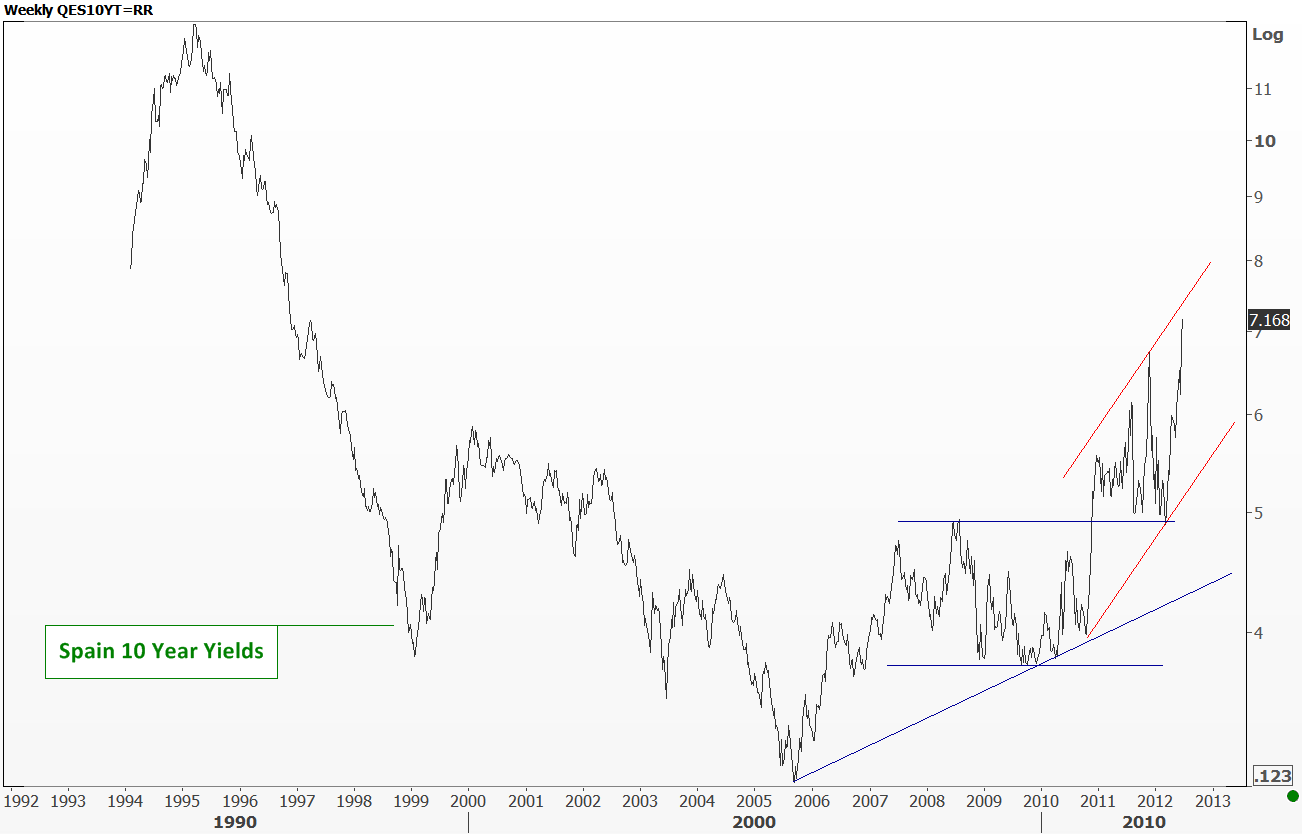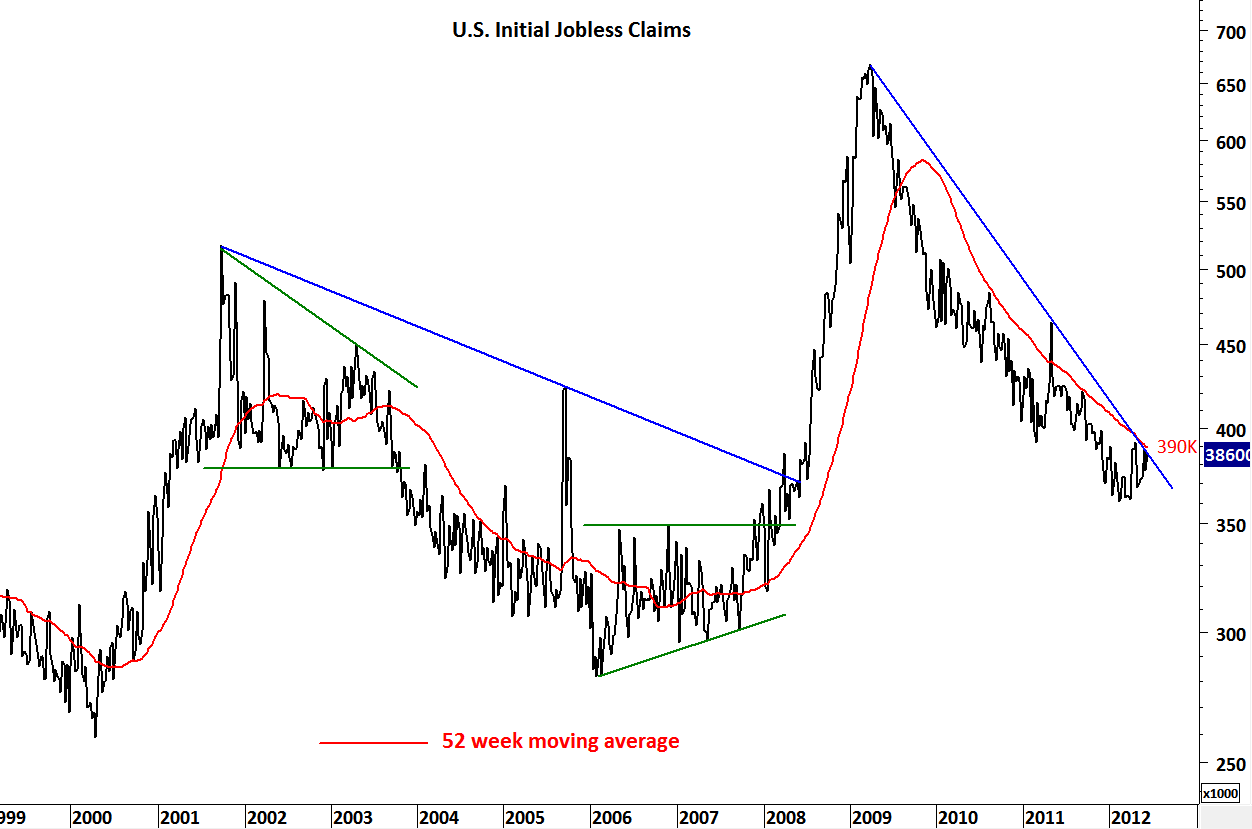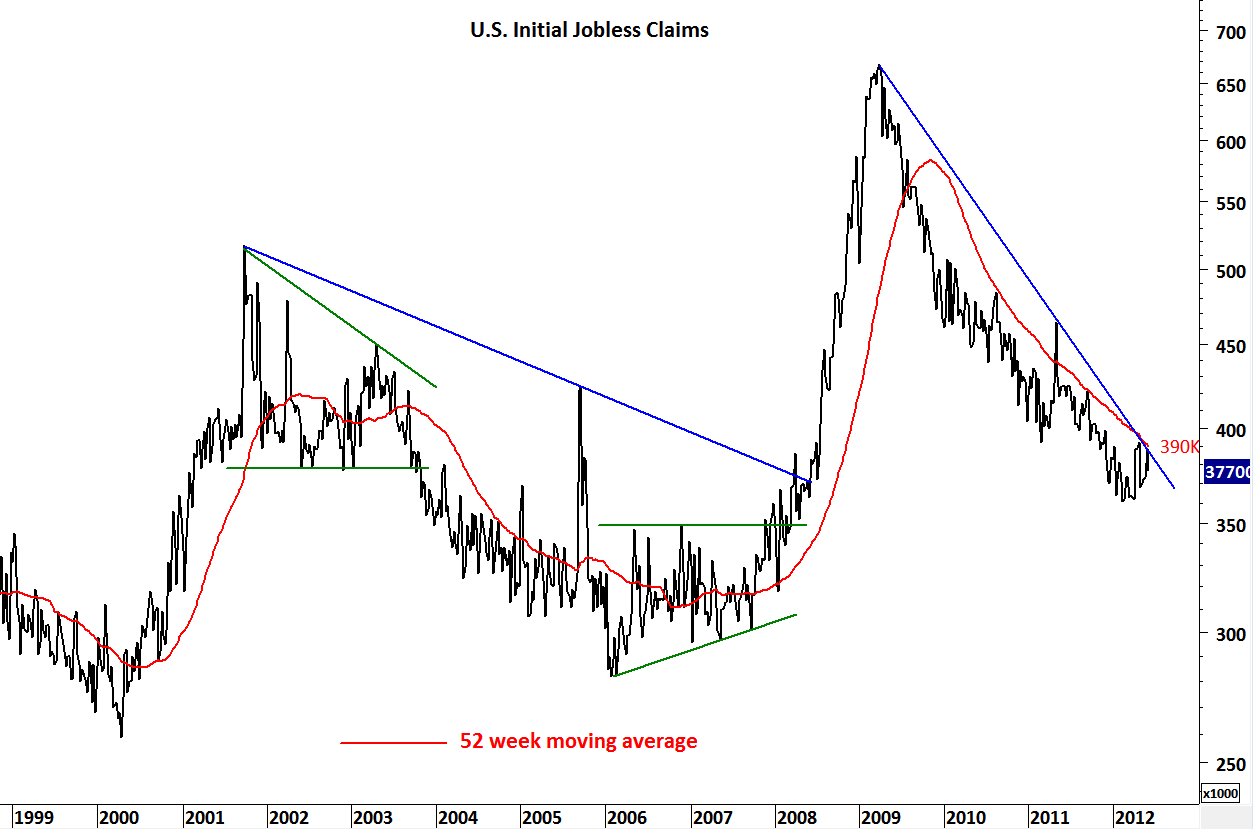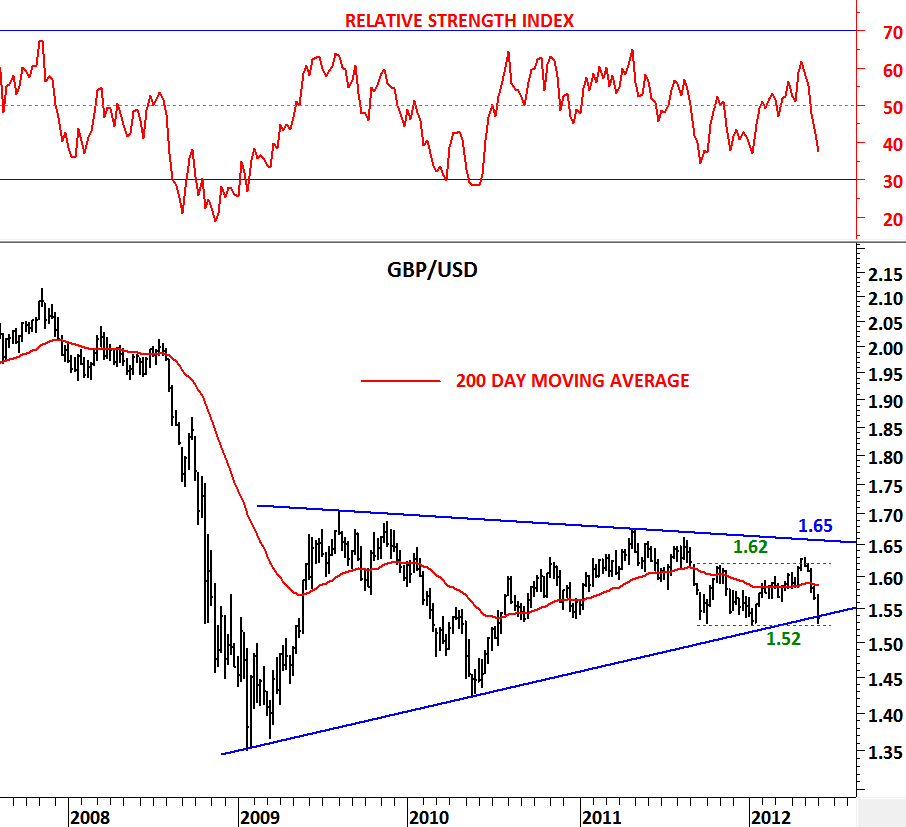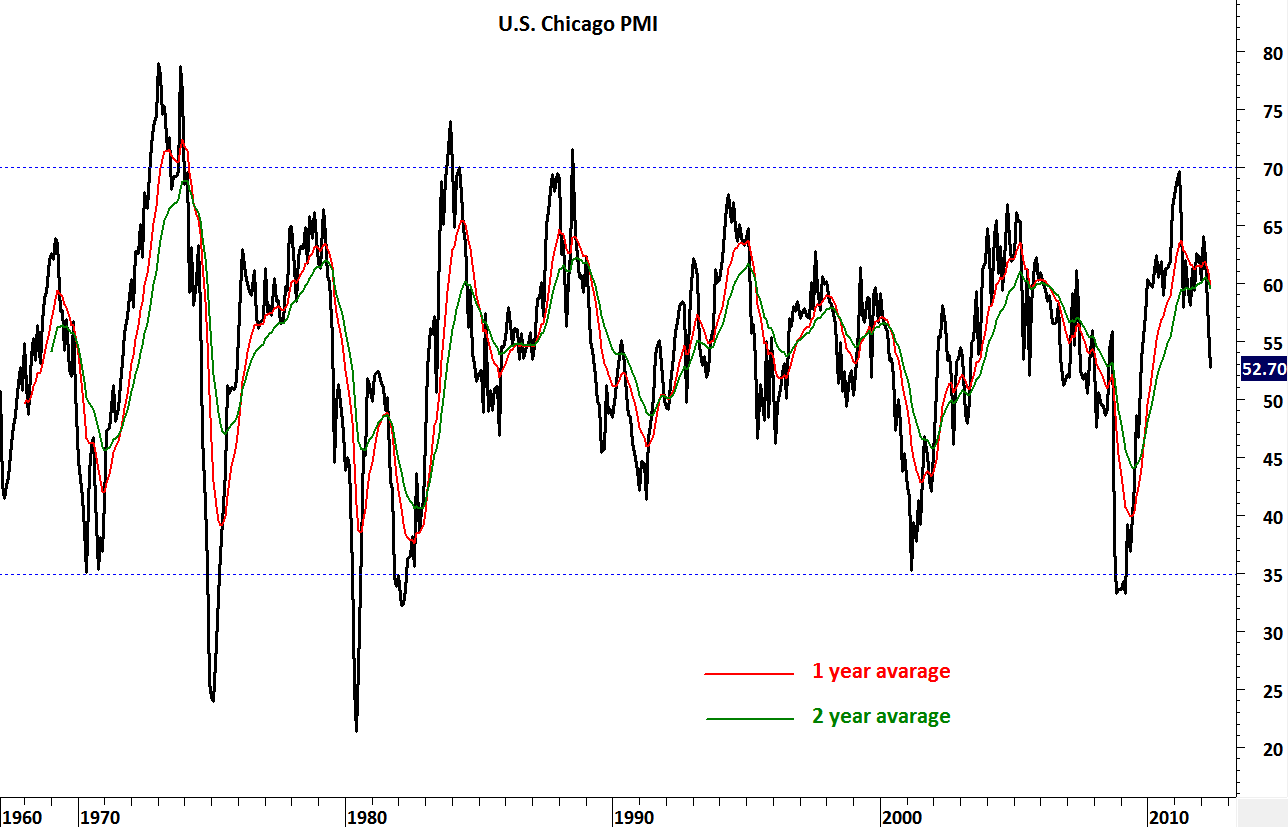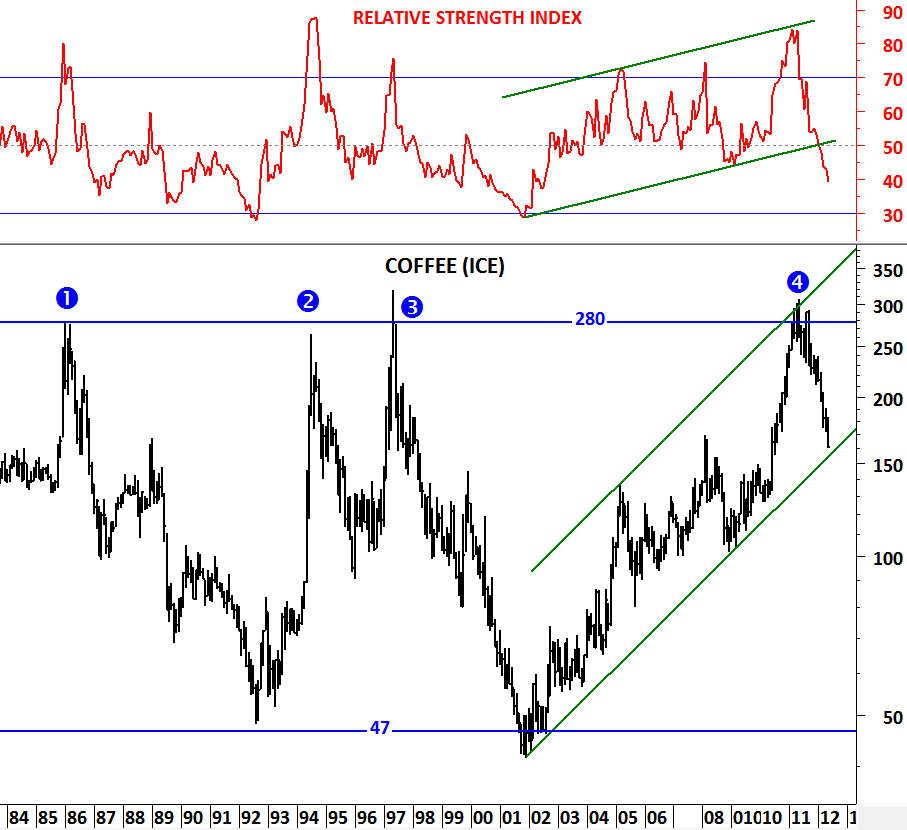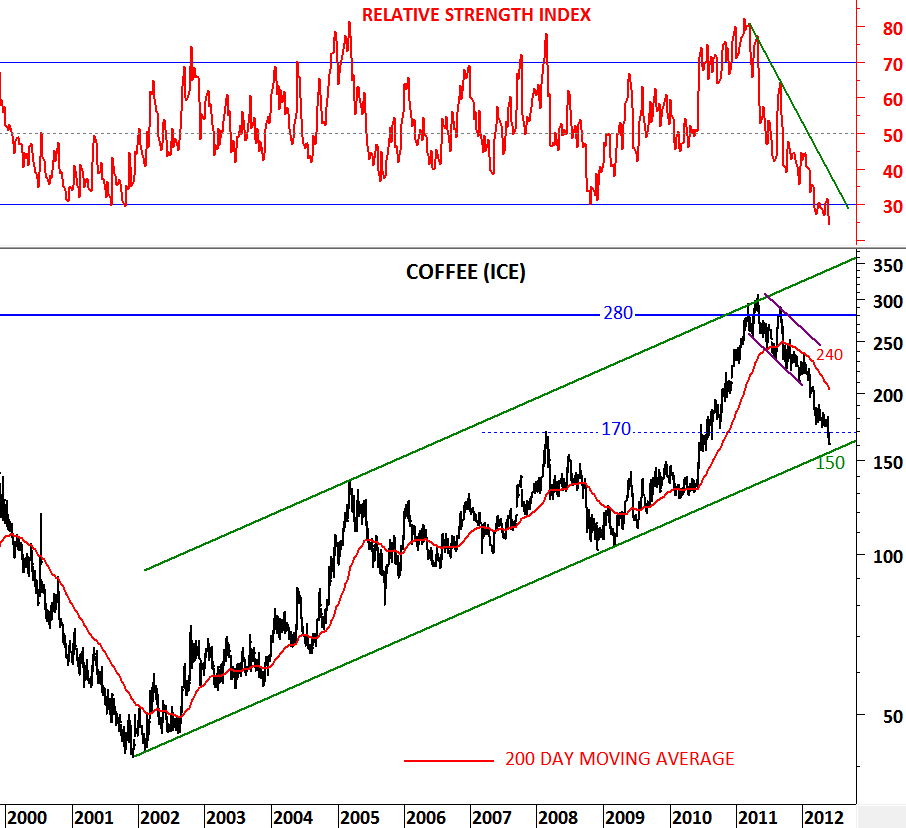NATURAL GAS
Since my last update on Natural Gas price moved higher and reached the important resistance area between 2.75 and 2.80. Earlier analysis discussed the possibility of a head & shoulder bottom reversal.
http://techcharts.wordpress.com/2012/06/18/natural-gas-3/
Natural gas is now closer to a decisive price action. A breakout above 2.75-2.80 will confirm the head and shoulder bottom and target 4.0 levels. It is important to note that 3 different technical resistances are overlapping at this resistance area. Year-long downward trend line, 200 day moving average and the neckline of the inverted head & shoulder pattern. A breakout should be significant. Failure to break above 2.75-2.80 area will pull the price back to 2.5 levels and result in more sideways consolidation below 2.75.



